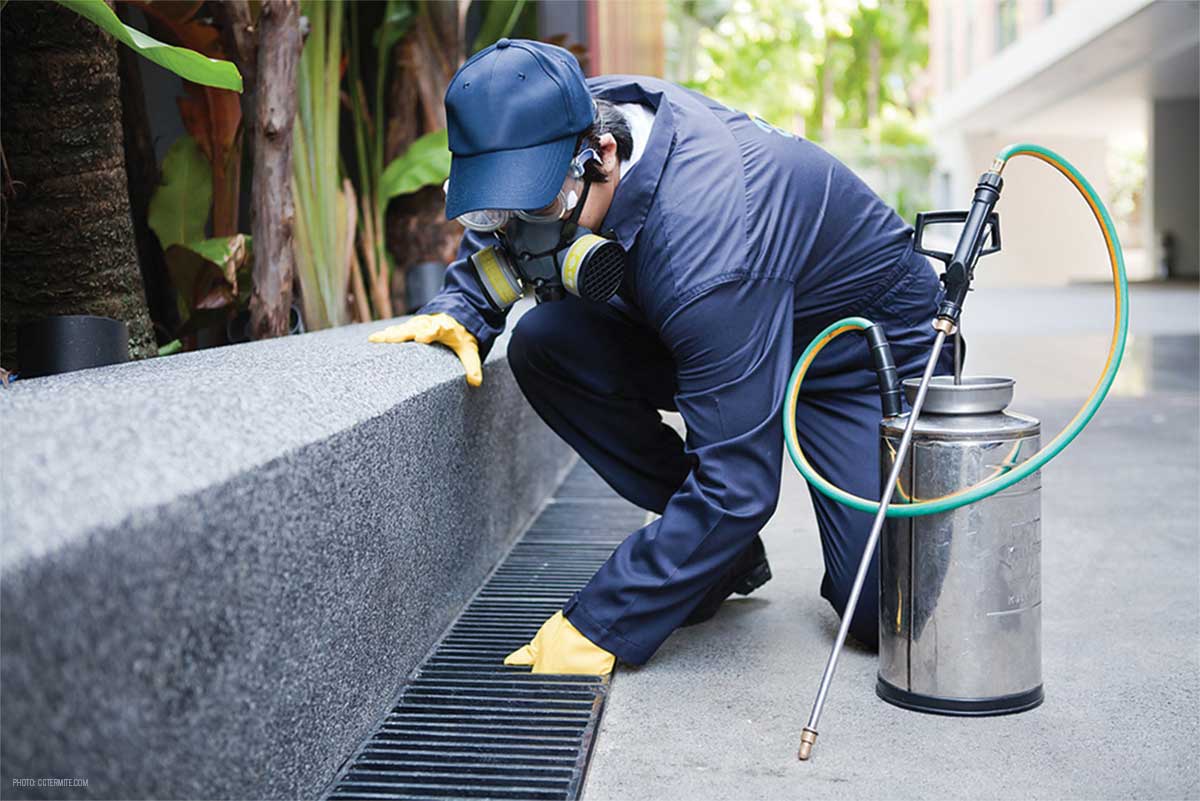Chicago Bug Infestation Removal: Quick and Reliable Pest Extermination
Chicago Bug Infestation Removal: Quick and Reliable Pest Extermination
Blog Article
A Comprehensive Overview to the Various Sorts Of Bug Control Approaches
With the myriad of pest control methods readily available, it can be overwhelming to find the most reliable option for a certain bug trouble. In this comprehensive guide, we will certainly discover these different kinds of pest control methods, using understandings right into their applications and advantages. By the end, you will have a clearer understanding of which approach might be the best fit for your pest control demands.
Chemical Bug Control Methods

One usual sort of chemical insect control is pesticides. Pesticides are chemical substances that are especially developed to eliminate or repel bugs. They can be used in various types, such as sprays, baits, or dusts. Pesticides target particular bugs, such as mosquitoes, termites, or ants, and can be used both inside your home and outdoors.
An additional kind of chemical parasite control is rodenticides. These are chemical materials designed to regulate populations of rats, such as rats and mice.
Herbicide, additionally called herbicides, are an additional sort of chemical bug control technique. Herbicides are designed to selectively kill unwanted plants, called weeds, without creating damage to desirable plants. They are commonly used in farming, landscaping, and horticulture to manage the development of undesirable plant life.
While chemical bug control methods can be extremely reliable in eliminating bugs, it is vital to utilize them deliberately and adhere to security standards. Overuse or abuse of chemical pesticides can have unfavorable effect on human health and wellness and the environment. It is essential to use these techniques properly and take into consideration alternative pest control methods whenever feasible.
Biological Bug Control Methods
Biological bug control approaches include the usage of living microorganisms or natural substances to manage and control pest populations. Unlike chemical methods, which commonly count on artificial pesticides, organic control techniques use the all-natural adversaries of parasites to control their populations. This technique is thought about more eco friendly and lasting, as it lowers the usage of hazardous chemicals and minimizes the risk of pesticide resistance.
One extensively made use of biological parasite control technique is the intro of natural killers or parasites. Ladybugs are introduced to manage aphids, while particular wasp species are launched to target caterpillars. These predators and parasites eat pests, minimizing their numbers and preventing infestations.
One more organic control method great post to read is using microorganisms. Certain germs, infections, and fungi can be used to infect and kill certain bugs. The bacterium Bacillus thuringiensis is frequently utilized to regulate caterpillars, as it creates toxins that are deadly to these bugs.
Biological control methods can likewise entail the use of pheromones or natural substances that interfere with the mating patterns of pests. By interfering with their reproduction, these techniques assist to lower pest populations over time.
While organic insect control techniques are usually effective, they might call for longer durations to attain wanted results compared to chemical approaches. In addition, cautious factor to consider needs to be offered to the choice and release of all-natural opponents to stop unexpected harm to helpful microorganisms or ecological communities.
Physical Parasite Control Methods
To properly handle and control pest populations, different insect control techniques understood as physical parasite control approaches are used. An additional physical parasite control approach is the installation of fences or walls to maintain larger insects, such as deer or rabbits, out of gardens or agricultural areas. Physical bug control methods are an environmentally friendly alternative to chemical pesticides, as they do not rely on the usage of damaging chemicals.
Natural Parasite Control Methods
Natural bug control techniques offer a lasting and eco-friendly method to managing and getting rid of pests. These approaches prioritize making use of all-natural substances and biological agents, decreasing the need for chemical pesticides that can hurt the environment and human health and wellness. Among the most usual natural pest control methods is organic control. This includes presenting all-natural predators or parasites to prey on or parasitize the bugs. For instance, ladybugs are commonly introduced to yards to regulate aphid populaces. One more all-natural method is making use of repellents originated from plants. Specific plants, such as marigolds, lavender, and pepper mint, emit aromas that fend off parasites like insects, flies, and ants. Furthermore, cultural control practices can be used to stop and manage pest invasions. This includes correct cleanliness, normal maintenance, and advertising biodiversity in the yard. Revolving plants, getting rid of yard debris, and encouraging more info here natural killers can assist prevent the accumulation of bugs. By embracing these all-natural insect control approaches, individuals and communities can effectively manage pests while lessening the adverse influence on the setting and human health and wellness.
Integrated Bug Administration (IPM)
Integrated Pest Monitoring (IPM) is a detailed and systematic strategy to pest control that combines numerous methods and strategies to successfully manage insects while lessening making use of chemical pesticides. IPM intends to preserve pest populaces listed below the financial injury level by utilizing a combination of social, biological, and chemical control methods.
Social control approaches involve customizing the environment to make it less desirable for pests. This can consist of methods such as crop rotation, proper cleanliness, and the use of resistant plant varieties. By developing undesirable conditions for parasites, cultural control techniques can substantially reduce pest populaces.

Chemical control methods are made use of as a last hope in IPM. They involve the targeted and wise use pesticides to manage pest populations. Unlike traditional bug control techniques, IPM aims to lessen using chemical pesticides by using alternative methods.
Integrated Pest Management (IPM) is a proactive strategy that concentrates on long-lasting pest management instead than relying solely on responsive procedures. By integrating several control methods, IPM gives a much more lasting and eco-friendly strategy to pest control.
Final Thought
It discussed chemical, organic, physical, and natural pest control methods, as well as the incorporated pest monitoring method. By comprehending these various approaches, people can make enlightened choices on which insect control technique is most ideal for their details requirements and choices.
Report this page